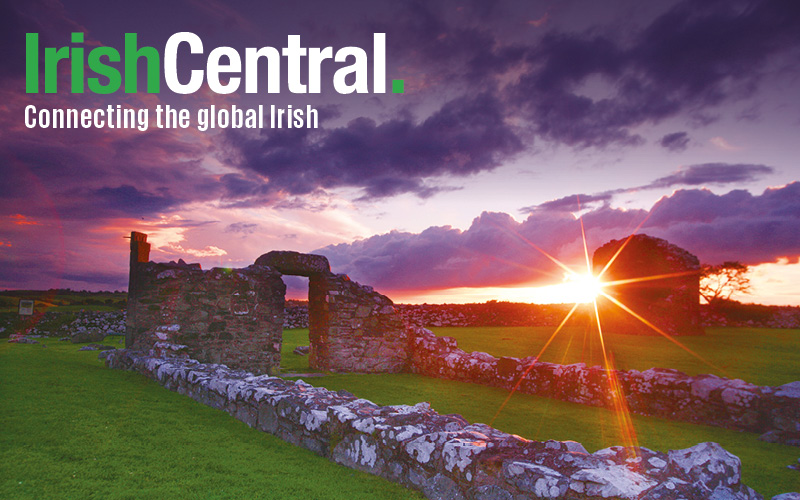| A bustling street in Galway |
The timing was fortuitous in that my cousin and her fiancé have just relocated to Dublin from Manhattan. Another Donnelly has moved “home”; my grandmother must be spinning in her grave! They were anxious to get a feel for the small city they have heard so much about.
The prospect of having to show newcomers with very high expectations around a city might provoke apprehension in some. I knew, however, that there was no reason to fear. Galway would surely offer its wide array of charms in abundance and the newcomers would quickly understand just how special a place it is. Well, it did and now they do.
From the moment I stepped off the train at Ceannt Station in Eyre Square, there was a fantastic buzz in the air that only Galway can generate. It was a real homecoming for me. On my fifteen minute stroll from Eyre Square to my great friend Fergus McGinn’s pub, Monroe’s, I was stopped or waved to no less than seven times by friends from all walks of Galway life. I was genuinely moved by the true warmth with which they greeted me. All weekend long, the streets were alive with revellers and there was very little, if any, trouble. As
I walked down Shop Street on Friday evening, it was wonderful to hear Padraig Stevens’ “Streets of Galway” being played by two young buskers. The song’s locally coloured lyrics and eternally prescient chorus – “The rain comes lashin’, splish-splashin’, down on the town in a Galway fashion” – render it, not the so overplayed it’s grating “Galway Girl,” the city’s real anthem. On Friday, I met the visitors in Monroe’s and, after a few pints, we headed “up town” for a look.
They were blown away by the atmosphere and expressed surprise that their weekend in Galway might even exceed expectations. They loved the restaurants they ate in, the variety of pubs they drank in and they got a tremendous kick out of the many characters I was able to introduce them to. On Saturday, we had a walk around the stalls offering all sorts of food and merchandise and the race village that was created especially for the festival before undertaking a second lengthy pub crawl. We had another great night.
Of course, the city was teeming with people from all over Ireland and all around the world. John Killeen and his colleagues at “Let’s Do It Global,” who worked tirelessly to promote Galway’s status as the final destination of the 2012 Volvo Ocean Race, deserve an enormous amount of credit.
They helped attract 900,000 visitors to the city, and the festival was worth €100 million to the city and to the region. In a country still mired in recession, these numbers are extraordinary. And this was just a start to the annual events that make Galway the place to be during the summer in Ireland. The Galway Film Fleadh has just concluded; the Galway Arts Festival has just commenced; and the Summer Festival Meeting of the world-renowned Galway Races begins on the 30th of July. The party will last through August.
Galway has long held these celebrated summer events and is known throughout Ireland as the premier destination for a good time. How did the city gain this reputation? The answer is relatively straightforward. All of the different sectors and groups that co-exist in Galway unite to promote all that the city has to offer and to provide a heartfelt welcome to visitors, regardless of where they’re from.
There are certainly simmering tensions and competing agendas in the city, but these are typically overcome by a shared desire to promote Galway. After all, it’s in everyone’s interest. Unfortunately, many other cities and towns in Ireland do not seek to emulate Galway in this regard. Although it is true that Galway has a lot going for it – it’s a university city, it’s an established tourist destination, it’s a hotbed of Irish culture – other Irish cities and towns have their own strengths.
By way of example, while soaking up the atmosphere in Galway at the ocean race festival, I started to think about the seaside town in which I have lived on a full-time basis for the last two years, Wicklow Town. It is picturesque, quaint and just an hour south of Dublin. Yet festivals hosted by the town invariably, and by popular acclaim, are never as good as they could be. A comment I overheard a local businessman make a couple of years ago was particularly revealing. Just before a festival, a number of people in town questioned whether additional trains to and from Dublin had been sought to encourage visitors from the capital. Instead of welcoming the 1.6 million potential customers on his doorstep, the businessman stated that “this isn’t a festival for Dublin people.”
This parochial, self-defeating outlook isn’t just in Wicklow Town. It pervades a lot of small cities and towns in Ireland. Those who undeniably love these cities and towns could learn a lot from the way Galway unites to promote itself as a must see destination.
As this country continues to battle recession, the more attractive destinations that can be created here, the better. My wife believes that my love for and devotion to my adopted home city are over the top. She’s even taken to calling it utopia in jest, and is no longer amused by the ear to ear grin that is perpetually on my face when we’re there.
Maybe she’s right. I probably am over the top. But as I always remind her, Galway is my utopia. And I know I’m not alone.




Comments